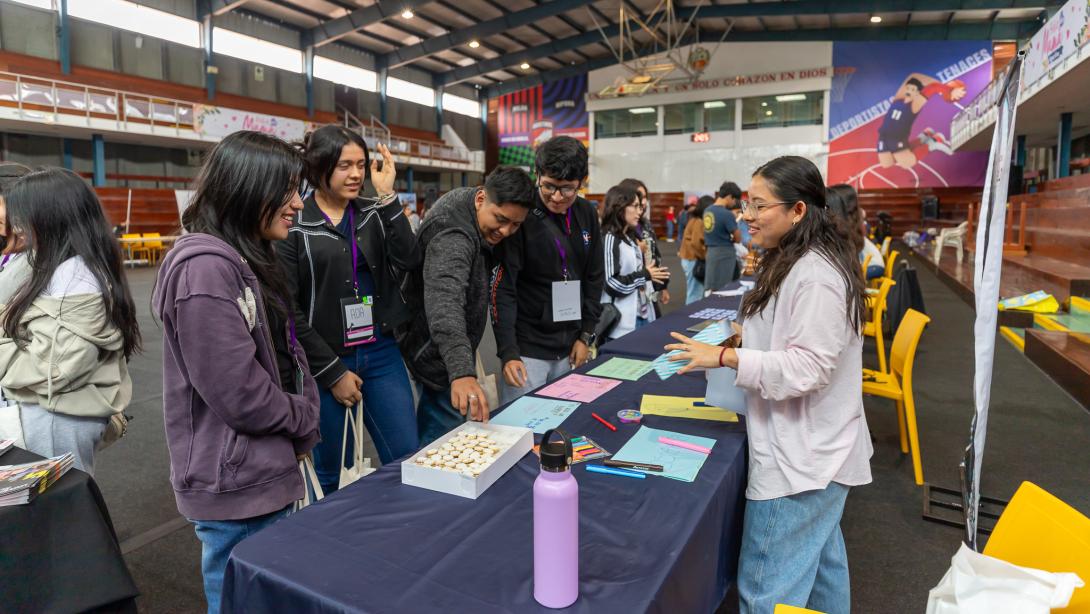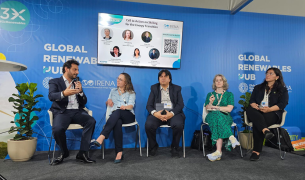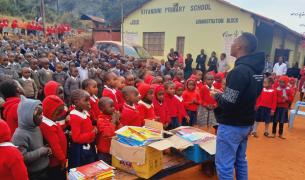Beyond Careers: How Trasciende’s Antiferia Vocacional inspires purpose-driven futures in Peru

When I was in my last years of high school, the question “What should I choose?” felt both exciting and terrifying. What if I chose wrong? It never seemed like just a career decision—it felt like I was shaping my future. That pressure grew heavier knowing that not everyone even gets to choose. In Peru, only 30% of young people successfully transition to higher education.
At the same time, the world keeps changing faster than ever. 65% of today’s kindergarteners will pursue careers that don’t yet exist. And if that wasn’t enough, what’s even more alarming is what’s happening with teenagers still in school right now—only 9 out of 100 students across Peru believe they can collaborate with their peers to address social challenges.
That’s why in 2020 my co-founders and I created Trasciende, and with it, the Antiferia Vocacional Virtual ("Virtual Alternative Vocations Fair") —a space for students to rethink what choosing a career really means. We chose the name because the Antiferia isn’t a typical fair; it’s an invitation to pause, reflect, and connect who you are with the kind of future you want to build.
After the success of the first edition—reaching more than 15,000 students from 20 departments across Peru, and collaborating with the Ministry of Education—we decided to found Trasciende as a social organization, with the Antiferia Vocacional as its flagship program. In many ways, Trasciende was born with the Antiferia, and the program has continued to evolve—always staying true to the same question: Before asking what to study, ask yourself what kind of world you want to build.
In August 2025, we hosted the first-ever in-person Antiferia Vocacional. After months of co-design, we welcomed nearly 200 students and over 20 institutions—including universities and social organizations— as well as 80 volunteers for a day filled with reflection, exploration, and connection. Students challenged myths about career choice, listened to professionals who had built meaningful careers, explored their personal stories, and learned from universities, social organizations, and professionals about “careers that transcend”— not only explaining what their work entails, but also highlighting the real-world problems they help solve through their daily practice. They also joined small learning groups led by young volunteers, creating safe spaces for conversation and collective learning.
By the end of the event, 70% of students felt capable of collaborating with their peers to solve community challenges—far above the national average of 9%. Many shared that they left the Antiferia with renewed curiosity, a sense of agency, and a broader definition of success—one rooted in purpose and contribution.
My participation in Teach For All’s Preparing Students for Future Careers course became a turning point in refining this work. The Career Readiness Education Framework, with its three categories—Expose, Explore, and Practice—offered both language and structure to strengthen what we were already doing intuitively. It also provided a set of indicators we hope to use in our future implementations to measure how our activities truly build students’ confidence, purpose, and leadership.
One key takeaway was the importance of designing learning experiences that connect exposure to real-world examples with guided reflection and practice. Inspired by this, we made three concrete improvements to the 2025 Antiferia:
-
We expanded exposure opportunities: universities, organizations, and professionals didn’t just showcase careers—they highlighted the problems they help solve, helping students see purpose in each path.
-
We deepened exploration: we refined the self-reflection workshop using prompts from the course, guiding students to link their stories, strengths, and aspirations more intentionally.
-
We encouraged practice: the “fall in love with problems workshop” invited students to design small actions they could start now to address local challenges, turning reflection into agency.
This alignment with the framework not only improved the flow of the event but also gave us a first approach to thinking about how to measure our impact more clearly, showing us that there are practical ways to capture changes in students’ leadership and confidence. Also, it was deeply inspiring to connect with professionals from across the world who are also reimagining how vocational guidance can empower young people to transcend.
Looking ahead, we aim to adapt the Antiferia Vocacional for public schools in Lima. As we scale, we’ll continue strengthening measurement tools and designing active learning spaces for our young volunteers, recognizing that the Antiferia transforms not only students but also those who facilitate it.
Through this journey, I have three key takeaways. First, students need more than information—they need spaces to connect with their peers and their own stories with the future they want to build. Second, frameworks like the one I learned through the Preparing Students for Future Careers course can strengthen local efforts and align them with a global vision. Finally, purpose is the compass that turns choosing a career into building a life project that contributes to something bigger than oneself.



